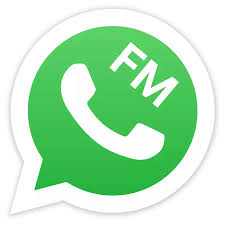
In today's diverse and dynamic educational environment, visual aids like maps play a crucial role in enhancing student understanding. A US map labeled with states, capitals, and geographical features can be an indispensable tool in the classroom, fostering not only geographical literacy but also aiding in the teaching of history, social studies, and even current events. This article will explore various strategies for effectively using a labeled US map in educational settings and briefly touch on the role of a world map labeled in broadening global perspectives.
Enhancing Geography Lessons
Geography lessons come alive when students have the opportunity to interact with a labeled US map. Teachers can use the map to help students memorize state locations, capitals, and key geographical features like rivers, mountains, and lakes. Here’s how to incorporate it into daily lessons:
1. Interactive Learning: Use the map for interactive quizzes where students locate and identify different states. For example, ask students to find and label states based on clues you provide about their history, climate, or landmarks.
2. Daily Geography Questions: Start each class with a geography question related to the map. Over time, this will help students retain information more effectively. For instance, ask them to point out the state capital closest to your school.
3. Visual Associations: Encourage students to create visual associations by drawing connections between the map's features and the state's culture, economy, or historical significance. This method strengthens memory and understanding by linking abstract concepts to tangible locations.
Integrating Maps into History Lessons
Maps are powerful tools in history education. A US map labeled with significant historical sites, battlefields, or migration routes can help students visualize and better understand historical events.
Mapping Historical Events: Have students trace the routes of famous explorers, settlers, or military campaigns on the map. This exercise allows them to see the physical challenges and distances involved in historical events, providing a deeper understanding of the past.
Comparative Analysis: Use the labeled US map to compare historical boundaries with current state lines. This can be particularly useful in lessons about westward expansion, the Civil War, or Native American history, helping students understand how geography has shaped the nation’s history.
Discussion Starter: A labeled map can serve as a starting point for discussions on how geography influenced political decisions, economic development, or social changes. For example, you might explore why certain cities became trade hubs or how the natural landscape affected migration patterns.
Supporting Cross-Curricular Learning
A labeled US map isn’t just for geography or history classes; it can also support learning in other subjects:
1. Mathematics: Use the map to teach scale, distance, and area calculations. Students can measure the distance between two cities and convert those measurements into different units, helping them practice real-world applications of mathematical concepts.
2. Literature: When reading literature set in the United States, locate the story's setting on the map. This helps students place the narrative in a geographical context, deepening their understanding of the text.
3. Current Events: In social studies, a labeled US map can help students track news stories. By marking locations where significant events are happening, students gain a better grasp of how these events connect to their own lives.
Expanding Perspectives with a Labeled World Map
While a labeled US map is essential for understanding national geography, a world map labeled with countries, capitals, and physical features can broaden students' global awareness. Here’s how to integrate it:
Global Connections: When teaching about international events or history, use the world map to show the global context. For example, when discussing World War II, students can see where major battles occurred globally.
Cultural Studies: Highlight different countries or regions on the world map as part of cultural studies lessons. This can help students appreciate the diversity of cultures and how geography influences lifestyles worldwide.
Comparative Geography: Compare the US with other countries in terms of size, population distribution, or physical features. This not only enhances geographical literacy but also helps students understand the global context of the United States.
Conclusion
Using a US map labeled with essential geographical details in the classroom offers a wide range of educational benefits. It supports interactive learning, enhances historical understanding, and provides a foundation for cross-curricular activities. Additionally, integrating a world map labeled with global features can expand students' perspectives, preparing them for a more interconnected world. By incorporating these maps into daily lessons, educators can foster a deeper understanding of geography and history while making learning more engaging and interactive.

































